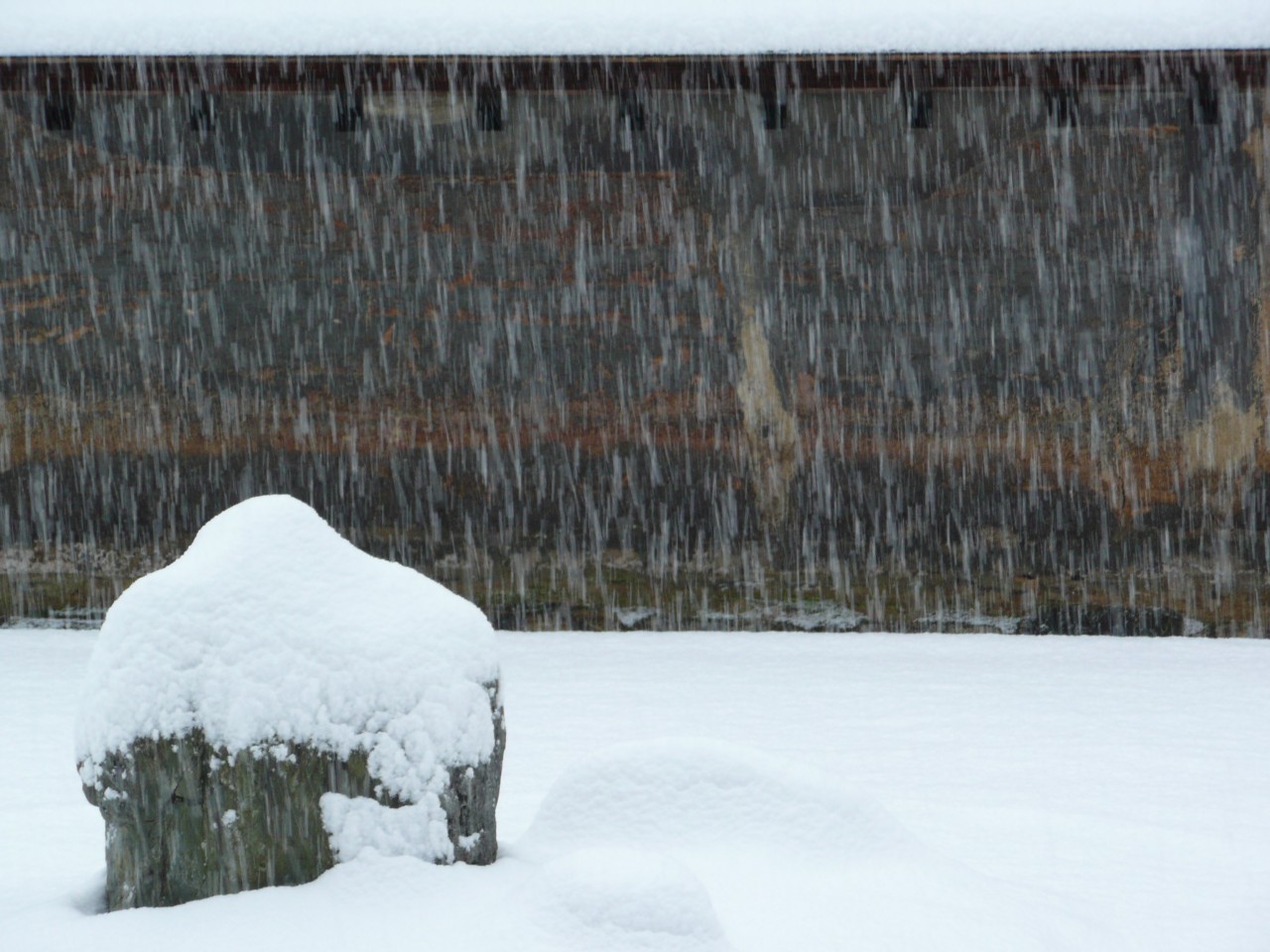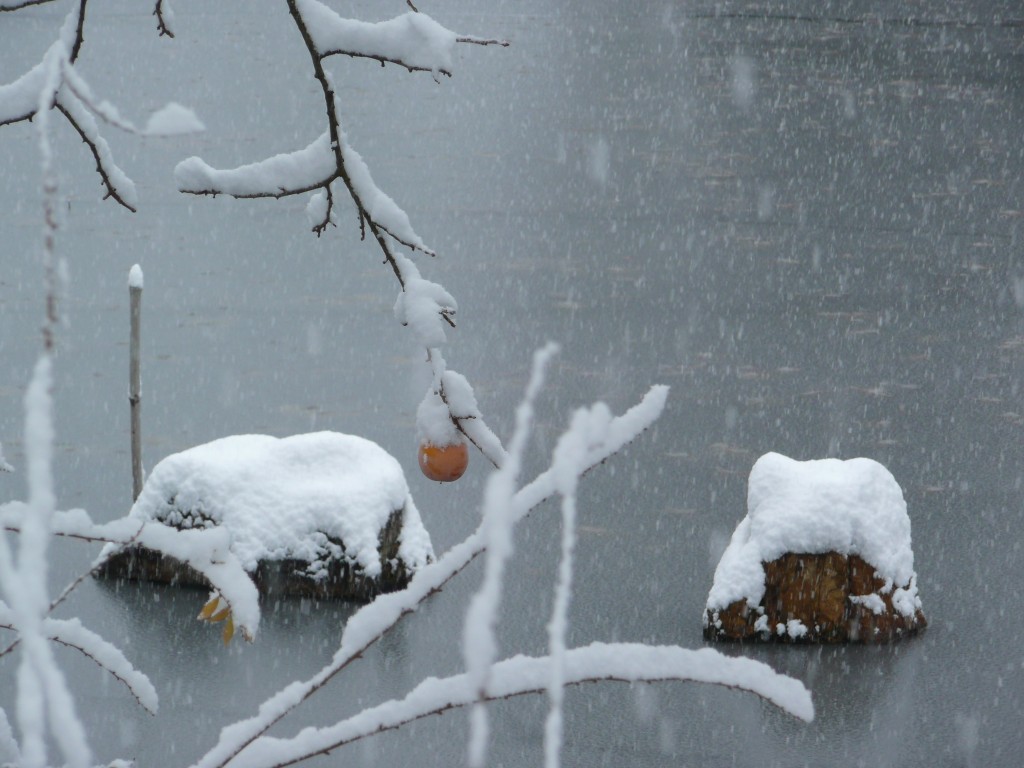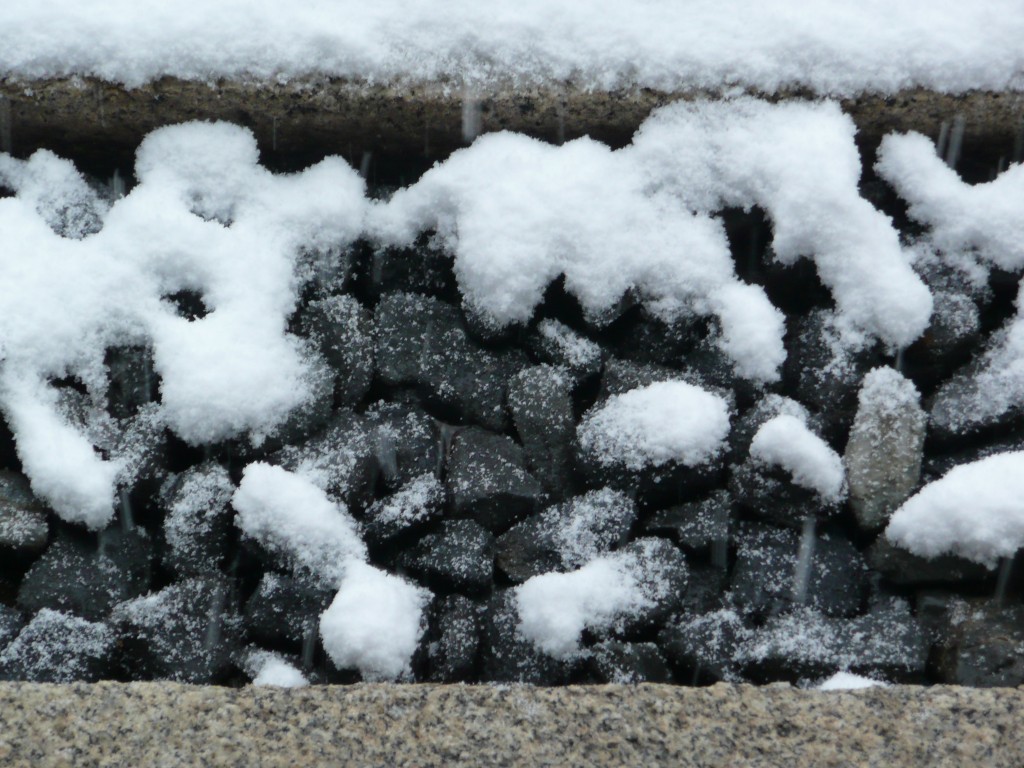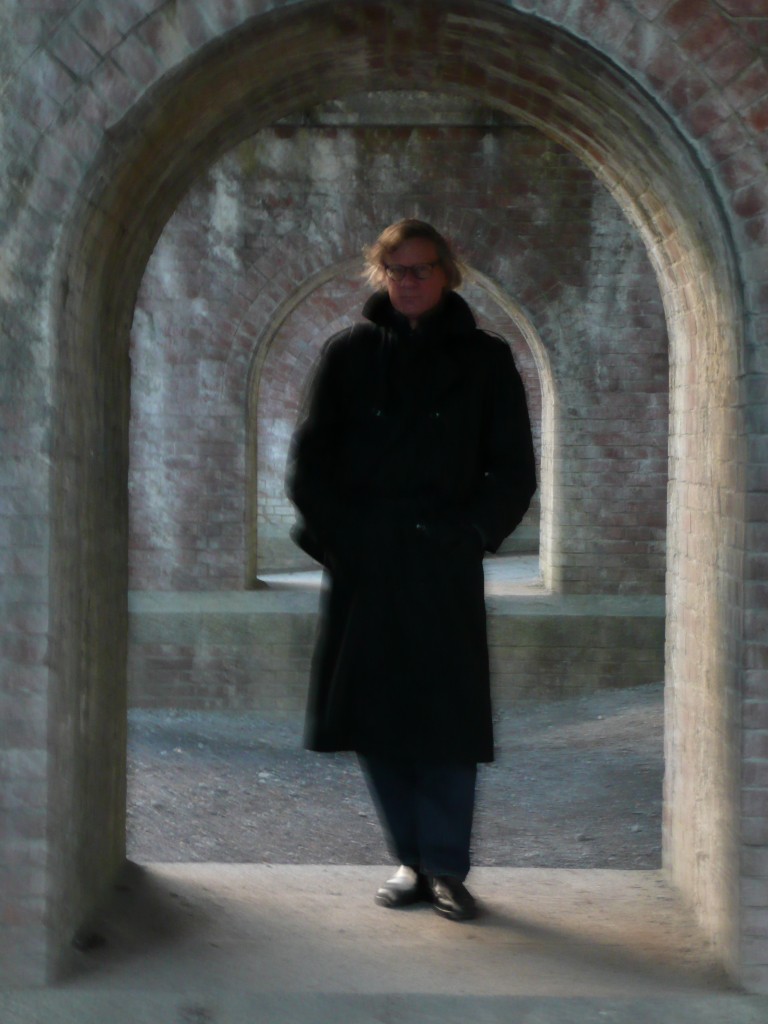Manifesto for the Future of Landscape (photos by Allen S. Weiss)
The dry garden of Ryōan-ji is one of the most analysed and photographed works of art in the world. Thus, well before my first visit in November 2006, I felt I knew the garden intimately, and was thoroughly prepared to elaborate on the knowledge I had attained from dozens of books and hundreds if not thousands of images. As soon as I stepped onto the veranda of the temple overlooking the garden, I was stupefied, first by its sublime beauty and soon afterwards by the fact that it hardly corresponded to any description I had read of it. How could this be? Could all previous commentators have been so wrong? Could I have been so blinded by my own prejudices and paradigms? Could I have fallen into the textual trap of confusing image and description for the garden itself? Certainly my attraction to Japanese dry gardens (karesansui) stems from the fact that they corroborate my aesthetic principles, wishes and utopias. But might this passion, hitherto untested against its objects, have falsified my vision? I immediately suspected that my disorientation went far beyond mere culture shock. With each discovery about Japanese culture, my bewilderment seemed to multiply even as my knowledge expanded, and I felt myself further from aesthetic enlightenment than ever, as Ryōan-ji led me to consider other art forms and other viewpoints: the stones had their antecedents in Chinese and Japanese painting; the surrounding walls evoked unglazed pottery surfaces; the stone borders hinted at the complicated issues of inside and outside in Japanese architecture; the sparse moss suggested the need for water in an otherwise dry garden, thus pointing to the essential role of atmospheric effects in Japanese art; the raked gravel stressed the role of stylization and stereotype in image and word; and the overhanging cherry tree evoked the crucial interpenetration of art and world. I was to discover that these correspondences were not mere free associations, but are deeply ingrained in Japanese aesthetics. After nearly two decades of meditation on Western gardens and landscape from the Baroque through the modern and postmodern eras, I realized that I had to reorient my ways of seeing completely in order to be able to elucidate my initial astonishment before Ryōan-ji. As a result I offer here a certain number of principles, composed in the form of a manifesto, to give a sense of my attitudes and hopes – often against the grain of contemporary theory and practice – regarding landscape creation, appreciation and conservation.
- The garden is a symbolic form, which suggests that symbols are as important as images to guide appreciation as well as restoration. The garden is earthly, but it also reaches to the heavens, and occasionally to the underworld.
- The garden is never merely a picture, and the ground plan is usually misleading. The spatiality of gardens is plastic and dynamic, such that movement is of the essence. The garden is thus a synaesthetic matrix.
- The garden is a Gesamtkunstwerk (a total work of art), a web of correspondences, a site that should encompass all the arts. Consequently, every garden must be continuously reinvented as a scene for contemporary activities.
- The garden is simultaneously a hermetic space and an object in the world. Thus the ‘formal’ garden must remain open to the ‘informality’ of nature. Garden closure is a sociological and psychological phenomenon, not an ontological one.
- The garden is a paradox, necessitating that complexity and contradiction should not be avoided, since the finest metaphors are often unstable and equivocal.
- The garden is a narrative, a transformer of narratives, and a generator of narratives, such that a garden is all that it evokes. Consequently, tales and symbols are an integral part of gardens.
- The unpeopled garden is either an abstraction or a ruin, suggesting that all aesthetic value has a use value that must be respected. The most complex landscape is the one most closely observed.
- The garden is a memory theatre, which must bear vestiges of its sedimented history, including traces of the catastrophes that it has suffered. In the history of landscape, accidents are not contingent, but essential.
- The garden is a hyperbolically ephemeral structure. Anachronism is of the essence, since a garden is all that it was and all that it shall become.
This compilation is offered not so much as a corrective to my initial perplexity, but as a spur to new intuitions and as a conceptual guide to the seemingly disparate, but in fact crucial, relations between gardens and the other arts. Ultimately, every artwork bears its own phantasmic ontology, which must be distinguished from the cultural forms and symbols that ground the work. Throughout history and across cultures, the forms of and relations between representation and vision are constantly changing. Our ways of seeing must be no less adaptable, subtle and inventive.
[This text is excerpted from Allen S. Weiss, Zen Landscapes: Perspectives on Japanese Gardens and Ceramics (London, Reaktion Books, 2013) and appears, in a slightly altered version, by permission of the publisher.]
*****************************
Allen S. Weiss is a writer, editor, translator, curator, playwright and photographer, and is the author and editor of over forty volumes in the fields of art history, performance theory, landscape architecture, gastronomy, sound art and experimental theater. He lives in New York, Paris, Nice, and spends a month or more every Autumn in Kyoto. His work on Kyoto includes the literary anthology Le goȗt de Kyoto (Mercure de France) and Zen Landscapes: Perspectives on Japanese Gardens and Ceramics (Reaktion), as well as Radio Gidayū, a soundscape of Kyoto (Deutschlandradio Kultur). Among his theoretical works are The Aesthetics of Excess (SUNY); Phantasmic Radio (Duke); Breathless: Sound Recording, Disembodiment, and the Transformation of Lyrical Nostalgia (Wesleyan); Feast and Folly: Cuisine, Intoxication, and the Poetics of the Sublime (SUNY); Varieties of Audio Mimesis: Musical Evocations of Landscape (Errant Bodies), as well as two culinary autobiographies: Métaphysique de la miette (Argol) and Autobiographie dans un chou farci (Mercure de France). He is committed to interdisciplinary research and experimental performance across the media, and his creative work includes Theater of the Ears (a play for electronic marionette and taped voice based on the writings of Valère Novarina), which premiered at CalArts ended its tour at the Avignon Off Festival; Danse Macabre (a marionette theater for the dolls of Michel Nedjar), which premiered as part of the Poupées (Dolls) exhibition that ASW curated at the Halle Saint Pierre in Paris, and was subsequently shown at the In Transit festival at the Haus der Kulturen der Welt in Berlin; and a novel, Le livre bouffon (Seuil). His radio productions include L’Indomptable (with Gregory Whitehead) for France Culture; the Hörspiel Glissando for the Klangkunst program of Deutschlandradio Kultur, and Carmignano, an essay on wine for Radio Papesse in Florence. His most recent project is Poupées des ténèbres / Dolls of Darkness, a documentary film about the dolls of Michel Nedjar and the Holocaust. He has been the recipient of Fulbright, Étant Donnés and Japan Foundation grants, and teaches in the departments of Performance Studies and Cinema Studies at New York University.
Amazon page for Allen S. Weiss. Contact: allen.weiss[at mark]nyu.edu




